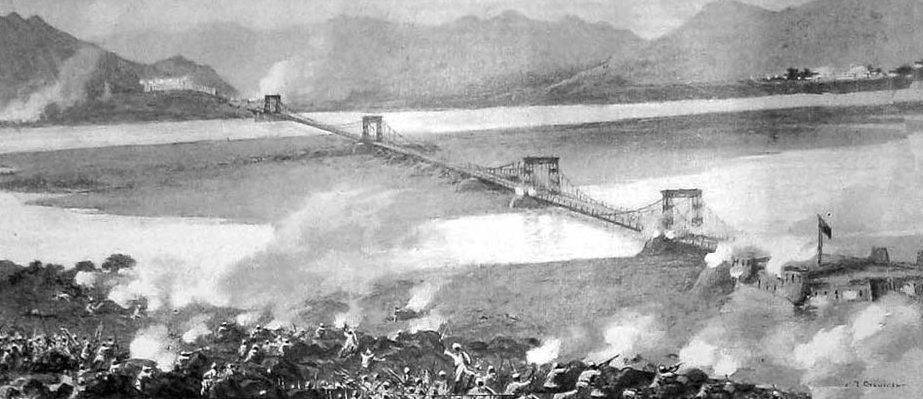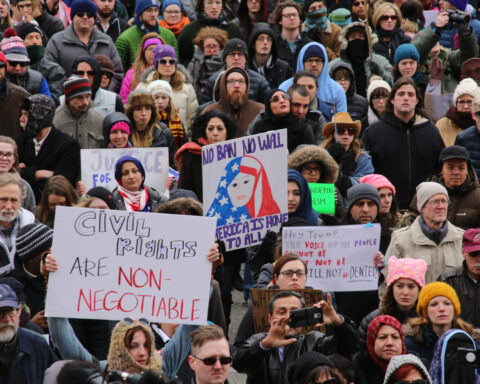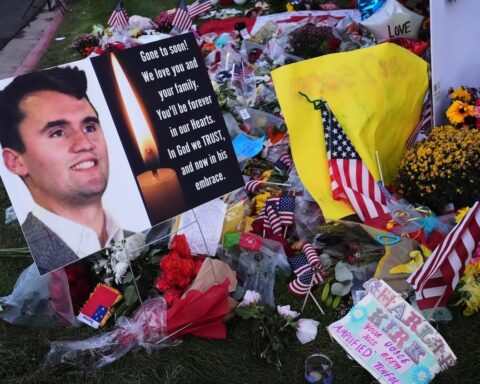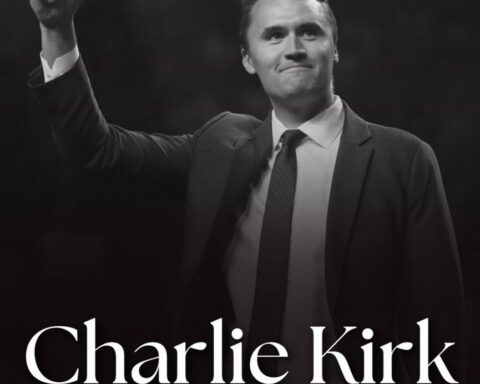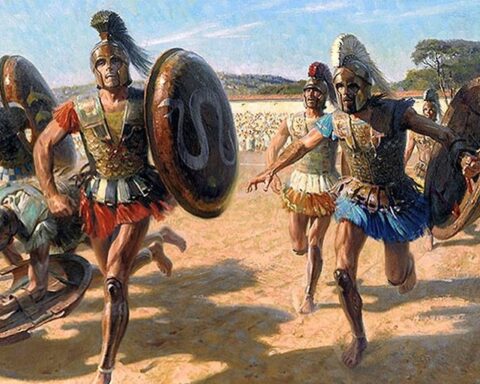Editor’s note: Here follows the sixth chapter of The Story of the Malakand Field Force: An Episode of Frontier War, by Winston S. Churchill (published 1898). All spelling in the original.
CHAPTER VI: THE DEFENCE OF CHAKDARA
... That tower of strength
Which stood four-square to all the winds that blew.
TENNYSON
The episode with which this chapter is concerned is one that has often occurred on the out-post line of civilisation, and which is peculiarly frequent in the history of a people whose widespread Empire is fringed with savage tribes. A small band of soldiers or settlers, armed with the resources of science, and strengthened by the cohesion of mutual trust, are assailed in some isolated post, by thousands of warlike and merciless enemies. Usually the courage and equipment of the garrison enable them to hold out until a relieving force arrives, as at Rorke’s Drift, Fort Chitral, Chakdara or Gulistan. But sometimes the defenders are overwhelmed, and, as at Saraghari or Khartoum, none are left to tell the tale. There is something strangely terrible in the spectacle of men, who fight—not for political or patriotic reasons, not for the sake of duty or glory—but for dear life itself; not because they want to, but because they have to. They hold the dykes of social progress against a rising deluge of barbarism, which threatens every moment to overflow the banks and drown them all. The situation is one which will make a coward valorous, and affords to brave men opportunities for the most sublime forms of heroism and devotion.
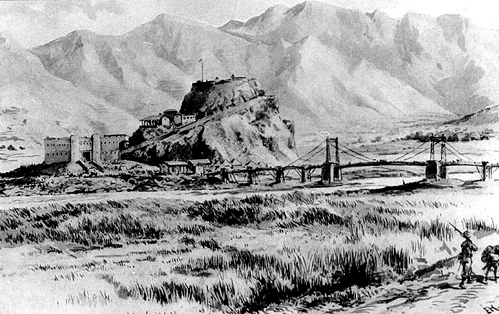
Chakdara holds the passage of the Swat River—a rapid, broad, and at most seasons of the year an unfordable torrent. It is built on a rocky knoll that rises abruptly from the plain about a hundred yards from the mountains. Sketches and photographs usually show only the knoll and buildings on it, and any one looking at them will be struck by the picturesque and impregnable aspect of the little fort, without observing that its proportions are dwarfed, and its defences commanded, by the frowning cliffs, under which it stands. In its construction the principles of defilade have been completely ignored. Standing on the mountain ridge, occupied by the signal tower, it is possible to look or fire right into the fort. Every open space is commanded. Every parapet is exposed. Against an enemy unprovided with artillery, however, it could be held indefinitely; but the fact that all interior communications are open to fire, makes its defence painful to the garrison, and might, by gradually weakening their numbers, lead to its capture.
The narrow, swinging, wire bridge across the Swat is nearly 500 yards long. At the southern end it is closed by a massive iron door, loopholed for musketry, and flanked by two stone towers, in one of which a Maxim gun is mounted. On the further side is the fort itself, which consists of the fortified knoll, a strong stone horn-work, an enclosure for horses, protected by a loopholed wall and much tangled barbed wire, and the signal tower, a detached post 200 yards up the cliff.

The garrison of the place consisted at the time of the outbreak of twenty sowars of the 11th Bengal Lancers and two strong companies of the 45th Sikhs, in all about 200 men, under the command of Lieutenant H.B. Rattray. [The actual strength was as follows: 11th Bengal Lancers, 20 sabres; 45th Sikhs, 180 rifles; 2 British telegraphists; 1 Hospital Havildar; 1 Provost Naick (24th Punjaub Infantry); 1 Jemadar (Dir Levies). British officers—45th Sikhs, Lieutenants Rattray and Wheatley; Surgeon-Captain V. Hugo; Political Agent, Lieutenant Minchin.] As the rumours of an impending rising grew stronger and stronger, and the end of July approached, this officer practised his men in taking stations in the event of an alarm, and made such preparations as he thought necessary for eventualities. On the 23rd he received an official warning from the D.A.A.G. [Deputy-Assistant-Adjutant-General. Surely this astounding title, with that of the Deputy-Assistant-Quarter-Master-General, might be replaced with advantage by the more sensible and appropriate terms “Brigade Adjutant” and “Brigade Quartermaster”!], Major Herbert, that a tribal rising was “possible but not probable.” Every precaution was henceforth taken in the fort. On the 26th, a Sepoy, who was out sketching, hurried in with the news that a large body of tribesmen were advancing down the valley, and that he himself had been robbed of his compass, his field-glasses and some money.
But, in spite of the disturbed and threatening situation, the British officers of the Malakand garrison, though they took all military precautions for the defence of their posts, did not abandon their practice of riding freely about the valley, armed only with revolvers. Nor did they cease from their amusements. On the evening of the 26th, Lieutenant Rattray went over to Khar as usual to play polo. Just as the game was ended, he received a letter, brought in haste by two sowars, from Lieutenant Wheatley, the other subaltern at Chakdara, warning him that a great number of Pathans with flags were advancing on the fort. He at once galloped back at full speed, passing close to one large gathering of tribesmen, who for some reason of their own took no notice of him, and so reached the fort in safety, and just in time. Formidable masses of men were then closing in on it. He telegraphed to the staff officer at the Malakand reporting the impending attack. Immediately afterwards the wire was cut by the enemy and the little garrison got under arms.
A havildar of the Khan of Dir’s Levies had promised the political agent to give warning of any actual assault, by lighting a fire on the opposite hills. At 10.15 a solitary flame shot up. It was the signal. The alarm was sounded. The garrison went to their posts. For a space there was silence, and then out of the darkness began a fusillade, which did not stop until the 2nd of August. Immediately the figures of the tribesmen, as they advanced to the attack on the western face of the fort, became visible. The defenders opened fire with effect. The enemy pressed on vigorously. Their losses were severe. At length they retreated repulsed.
A second attack was immediately delivered against the north-east corner and again beaten off by the garrison. At 4 A.M. a third assault was made upon the cavalry enclosure. The tribesmen, carrying scaling ladders, advanced with great determination. They were received with a deadly fire. They then drew off, and the first night of the siege was terminated by desultory firing. The garrison remained at their posts all night, and when it became day the enemy were seen to have retired, to the hills to the north-west, whence they maintained a ceaseless fire. Although the defenders were protected by their stone walls, many had strange escapes from the bullets, which fell incessantly into the interior.
Meanwhile, in spite of the vigorous attack that was being made on the Malakand, it had been decided to send some assistance to the little band at Chakdara. Captain Wright and forty sowars of the 11th Bengal Lancers with Captain Baker of the 2nd Bombay Grenadiers and transport officer at the Malakand, started at dawn on the 27th, by the road from the north camp. Before they had gone very far they came under the fire of the enemy on the hills. These did not dare to venture into the plain, but availed themselves of the broken nature of the country. As the squadron reached the road leading to the polo ground, Captain Wright received information that the enemy were collected on the plain and immediately the pace was quickened in the hopes of a charge being possible. But the tribesmen ran to the hills at the sight of the Lancers, and maintained a constant, though luckily, an ill-aimed fire. At length the village of Batkhela was reached, and beyond it the Amandara Pass came in sight. This is a gap in a long spur, which runs from the southern side of the valley to the rapid river in the middle. As the river was then in full flood and unfordable, the only road to Chakdara lay over or through the spur. But the pass was held by the enemy.
Captain Wright had by this time realised, what probably no one at the Malakand then knew, that the enemy’s numbers were enormous. The whole way from Malakand to Amandara—every ridge and hill was crowned with their banners. Wherever the ground protected them from the horsemen they gathered thickly. Cemeteries [Cemeteries are frequent and prominent features of Frontier landscapes. Some of them are of great extent: all of remarkable sanctity.], nullahs and villages swarmed with men. Their figures could be seen in all directions. Far beyond the Amandara Pass bands of tribesmen, of varying strengths, could be observed hurrying with their standards to the attack. But these formidable signs, far from deterring the cavalry soldier, only added, by displaying how great was the need of Chakdara, to his determination to force his way through at all costs.
Under a dropping fire from the cemetery on the right of the road, a brief consultation was held. The Amandara defile was occupied on both sides by the enemy. With the loss of perhaps a dozen men the squadron might gallop through. But this meant leaving all who fell, to perish miserably, by torture and mutilation. To attempt to pick up the wounded, would lead to the annihilation of the squadron. Any alternative was preferable, though if there were no other way, the dash would have to be made, and the wounded left. A Sowar now said there was a path round the rock by the bank of the river. Captain Wright determined to take it.
The path was bad. After about half the spur had been passed, it ended abruptly in a steep white rock. It was, in fact, a path leading to a point where the natives were in the habit of floating across the river upon “mussucks” (inflated skins). To go back now was to fail. Without hesitation, the horsemen turned to the right up the hill and among the rocks, trusting to get through somehow. After passing over ground which would be difficult to move across on foot, they saw a gorge to their left which appeared as if it would lead to the open plain, on the other side of the ridge. Down this gorge forty horses huddled together, with no room to pick their way, were scrambling and jumping from rock to rock, apparently as conscious as their riders that their lives depended on their cleverness—when, suddenly, the enemy appeared.
As soon as the tribesmen, who were holding the pass, saw the squadron trot off to their right towards the river, they realised that they intended to make a desperate effort to get through to Chakdara. They knew what the ground was like, and confident they would kill them all, if they could get there soon enough, ran swiftly along the spur. It was a race. The leading tribesmen arrived in time to fire on the cavalry, while they were in the gorge. So close were they, that the officers used their revolvers. But the Pathans were out of breath and shot badly. Several horses were hit, including Captain Wright’s, but though the large thigh bone was penetrated, the gallant beast held on, and carried his rider to Chakdara safely.
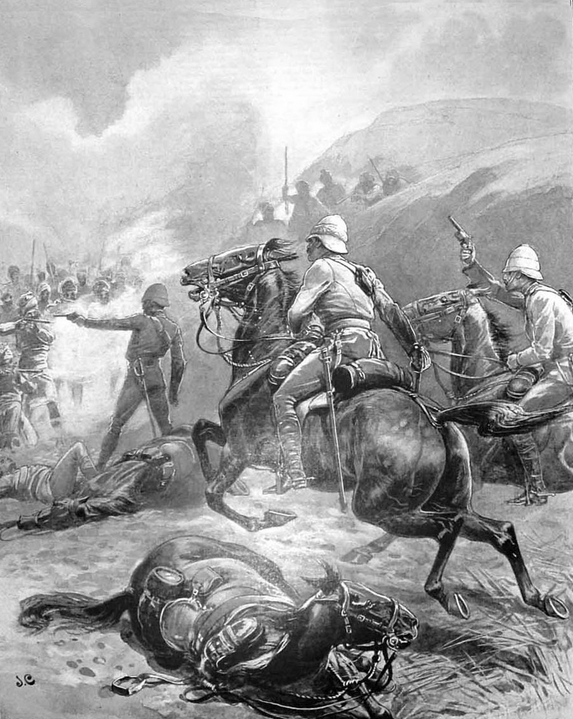
By the extraordinary activity of the horses the rocks were cleared before the enemy could collect in any strength. But, to the dismay of all, the gorge was found to lead, not to the plain, but to a branch of the river. A broad, swift channel of water of unknown depth confronted the cavalry. To go back was now, however, out of the question. They plunged in. The 11th Bengal Lancers are perhaps better mounted than any native cavalry regiment in India. Their strong horses just held their own against the current. Several were nearly swept away. Captain Wright was the last to cross. All this time the enemy were firing and approaching. At length the passage was made and the squadron collected on an island of flooded rice fields, in which the horses sank up to their hocks. Beyond this ran another arm of the river about fifty yards wide, and apparently almost as deep as the first. The bullets of the enemy made “watery flashes” on all sides. After passing this second torrent the squadron found themselves again on the same bank of the river as the enemy. They were in swampy ground. Captain Wright dismounted his men and returned the fire. Then he turned back himself, and riding into the stream again, rescued the hospital assistant, whose pony, smaller than the other horses, was being carried off its legs by the force of the water. After this the march was resumed. The squadron kept in the heavy ground, struggling along painfully. The enemy, running along the edge of the rice fields, maintained a continual fire, kneeling down to take good aim. A sowar threw up his hands and fell, shot through the back. Several more horses were hit. Then another man reeled in his saddle and collapsed on the ground. A halt was made. Dismounted fire was opened upon the enemy. The wounded were picked up, and by slow degrees Chakdara was approached, when the Bridgehead Maxim gun compelled the tribesmen to draw off. [For the particulars of this affair I am indebted to Captain Baker, 2nd Bombay Grenadiers, who shared its perils.]

Thus the garrison of the fort received a needed reinforcement. I have given a somewhat long description of this gallant ride, because it shows that there are few obstacles that can stop brave men and good horses. Captain Wright now assumed command of Chakdara, but the direction of the defense he still confided to Lieutenant Rattray, as fighting behind walls is a phase of warfare with which the cavalry soldier is little acquainted.
At 11.30, in the heat of the day the tribesmen attacked again. They surrounded the north and east sides of the fort, and made strenuous efforts to get in. They suffered heavy losses from the musketry of the defence, and their dead lay scattered thickly on the approaches. Nor were they removed till nightfall. Many Ghazis, mad with fanaticism, pressed on carrying standards, heedless of the fire, until they fell riddled with bullets under the very walls.
To communicate with the Malakand was now almost impossible. To heliograph, it was necessary that the operator should be exposed to a terrible fire. In the evening the signal tower was surrounded by men in stone sungars, who kept up an incessant fusillade, and made all exposure, even for an instant, perilous.
At midday, after the repulse of the main attack, the guard of the signal tower was reinforced by six men, and food and water were also sent up. This difficult operation was protected by the fire of both the Maxims, and of all the garrison who could be spared from other points. Until the 1st of August, water was sent up daily to the signal tower in this way. The distance was long and the road steep. The enemy’s fire was persistent. Looking at the ground it seems wonderful that supplies could have been got through at all.
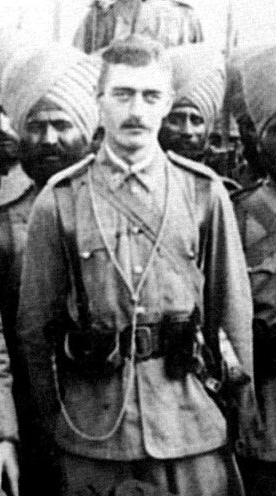
As night approached, the defenders prepared to meet a fresh attack. Lieutenant Wheatley, observing the points behind which the enemy usually assembled, trained the fort Maxim and the 9-pounder gun on them, while daylight lasted. At 11 P.M. the tribesmen advanced with shouts, yells and the beating of drums. The gun and the Maxims were fired, and it is said that no fewer than seventy men perished by the single discharge. At any rate the assault was delayed for an hour and a half. All day long the garrison had remained at their posts. It was hoped they would now get a little rest. But at 1 o’clock the attack was renewed on the north-east corner. Again the enemy brought up scaling ladders and charged with desperate ferocity. They were shot down.
Meanwhile every spare moment was devoted to improving the cover of the garrison. Captain Baker applied himself to this task, and used every expedient. Logs, sand bags, stones, boxes filled with earth were piled upon the walls. It is due to these precautions that the loss of life was no larger.
Continuous firing occupied the 28th, and at 5.30 P.M. the enemy again assaulted. As in previous attacks, they at first advanced by twos and threes, making little dashes over the open ground, for bits of natural cover, and for the stone sungars they had built all round the fort under cover of darkness. Some of these were within 200 yards of the wall. As they advanced the fire became intense. Then the main rush was delivered. In a great semi-circle round the face of the fort held by the cavalry, and displaying nearly 200 standards whose gay colours were representative of every tribe on the border, they charged right up to the walls. Some of them actually got across the tangled barbed wire and were destroyed in the enclosure. But all efforts were defeated by the garrison, and towards morning the attack melted away, and only the usual sharpshooters remained. Some of these displayed a singular recklessness. One man climbed up into the barbed wire and fired three shots at the defenders at close quarters before he was killed.
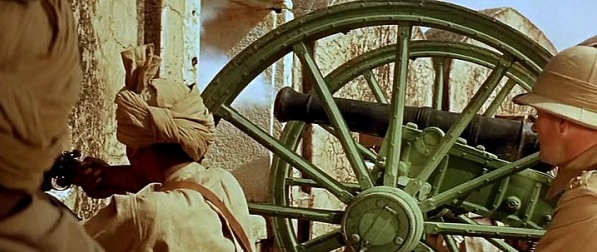
Thursday morning dawned on similar scenes. The garrison employed such intervals as occurred in strengthening their defences and improving their cover, particularly in the approaches to the Maxim and field gun platforms. At 3 P.M. the enemy came out of Chakdara village, and, carrying ladders to scale the walls, and bundles of grass to throw on the barbed wire, made a formidable effort. They directed the attack mainly against the signal station. This building is a strong, square, stone tower. Its entrance is above six feet from the ground. All around the top runs a machiconlis gallery, a kind of narrow balcony, with holes in the floor to fire through. It is well provided with loopholes. At 4 o’clock it was closely assailed. The garrison of the fort aided the tower guard by their fire. So bold were the enemy in their efforts, that they rushed in under the musketry of the defence, and lighted a great heap of grass about three yards from the doorway. The flames sprang up. A howl of ferocious delight arose. But the tribesmen relapsed into silence, when they saw that no real harm was done. At sunset the fore sight of the fort Maxim was shot away, and the defenders were temporarily deprived of the service of that powerful weapon. They soon managed, however, to rig up a makeshift, which answered all practical purposes. At 8 P.M. the enemy wearied of the struggle, and the firing died away to desultory skirmishing. They toiled all night carrying away their dead, but next morning over fifty bodies were still lying around the signal tower. Their losses had been enormous.
The morning of the 30th brought no cessation of the fighting, but the enemy, disheartened by their losses of the previous night, did not attack until 7 P.M. At that hour they advanced and made a fresh effort. They were again repulsed. Perhaps the reader is tired of the long recital of the monotonous succession of assaults and repulses. What must the garrison have been by the reality? Until this day—when they snatched a few hours’ sleep—they had been continually fighting and watching for ninety-six hours. Like men in a leaking ship, who toil at the pumps ceaselessly and find their fatigues increasing and the ship sinking hour by hour, they cast anxious, weary eyes in the direction whence help might be expected. But none came. And there are worse deaths than by drowning.
Men fell asleep at the loopholes and at the service of the field gun. Even during the progress of the attacks, insulted nature asserted itself, and the soldiers drifted away from the roar of the musketry, and the savage figures of the enemy, to the peaceful unconsciousness of utter exhaustion. The officers, haggard but tireless, aroused them frequently.
At other times the brave Sepoys would despair. The fort was ringed with the enemy. The Malakand, too, was assailed. Perhaps it was the same elsewhere. The whole British Raj seemed passing away in a single cataclysm. The officers encouraged them. The Government of the Queen-Empress would never desert them. If they could hold out, they would be relieved. If not, they would be avenged. Trust in the young white men who led them, and perhaps some dim half-idolatrous faith in a mysterious Sovereign across the seas, whose soldiers they were, and who would surely protect them, restored their fainting strength. The fighting continued.
During the whole time of the siege the difficulty of maintaining signalling communication with the Malakand was extreme. But for the heroism of the signallers, it would have been insuperable. One man in particular, Sepoy Prem Singh, used every day at the risk of his life to come out through a porthole of the tower, establish his heliograph, and, under a terrible fire from short range, flash urgent messages to the main force. The extreme danger, the delicacy of the operation of obtaining connection with a helio, the time consumed, the composure required, these things combined to make the action as brave as any which these or other pages record. [A proposal has recently been made, to give the Victoria Cross to native soldiers who shall deserve it. It would seem that the value of such a decoration must be enhanced by making it open to all British subjects. The keener the competition, the greater the honor of success. In sport, in courage, and in the sight of heaven, all men meet on equal terms.] Early on Saturday morning a supply of water was sent to the guard of the signal tower. It was the last they got until 4.30 on Monday afternoon.
When the attack on the fort began, the enemy numbered perhaps 1500 men. Since then they had been increasing every day, until on the 1st and 2nd, they are estimated to have been between 12,000 and 14,000 strong. Matters now began to assume a still graver aspect. At 5 o’clock on the evening of the 31st a renewed attack was made in tremendous force on the east side of the fort. But it was beaten back with great loss by the Maxims and the field gun. All night long the firing continued, and Sunday morning displayed the enemy in far larger numbers than hitherto. They now captured the Civil Hospital, a detached building, the walls of which they loopholed, and from which they maintained a galling fire. They also occupied the ridge, leading to the signal tower, thus cutting off all communication with its guard. No water reached those unfortunate men that day. The weather was intensely hot. The fire from the ridge made all interior communication difficult and dangerous. The enemy appeared armed to a great extent with Martini-Henry rifles and Sniders, and their musketry was most harassing. The party in the tower kept sending by signal pressing requests for water, which could not be supplied. The situation became critical. I quote the simple words of Lieutenant Rattray’s official report:—
“Matters now looked so serious that we decided to send an urgent appeal for help, but owing to the difficulty and danger of signalling we could not send a long message, and made it as short as possible, merely sending the two words, ‘Help us.'”
Still the garrison displayed a determined aspect, and though the tribesmen occupied the ridge, the Civil Hospital and an adjoining nullah, none set foot within the defences.
At length the last day of the struggle came. At daybreak the enemy in tremendous numbers came on to the assault, as if resolute to take the place at any cost. They carried scaling ladders and bundles of grass. The firing became intense. In spite of the cover of the garrison several men were killed and wounded by the hail of bullets which was directed against the fort, and which splashed and scarred the walls in every direction.
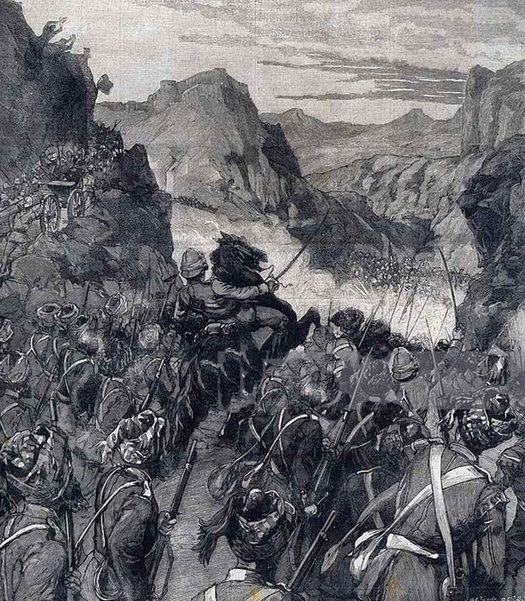
Then suddenly, as matters were approaching a crisis, the cavalry of the relieving column appeared over the Amandara ridge. The strong horsemen mercilessly pursued and cut down all who opposed them. When they reached the Bridgehead on the side of the river remote from the fort, the enemy began to turn and run. The garrison had held out stubbornly and desperately throughout the siege. Now that relief was at hand, Lieutenant Rattray flung open the gate, and followed by half a dozen men charged the Civil Hospital. Captain Baker and Lieutenant Wheatley followed with a few more. The hospital was recaptured. The enemy occupying it, some thirty in number, were bayoneted. It was a finish in style. Returning, the sallying party found the cavalry—the 11th Bengal Lancers—checked by a sungar full of tribesmen. This they charged in flank, killing most of its occupants, and driving the rest after their comrades in rout and ruin. The last man to leave the sungar shot Lieutenant Rattray in the neck, but that officer, as distinguished for physical prowess as for military conduct, cut him down. This ended the fighting. It is not possible to think of a more fitting conclusion.
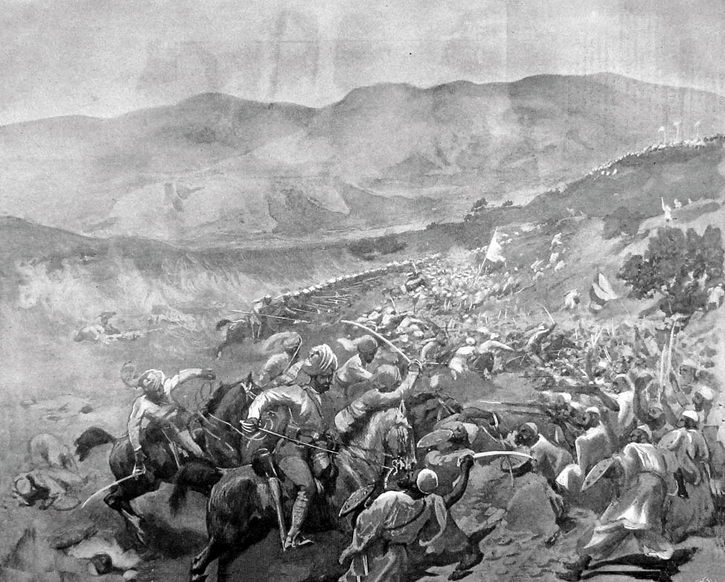
The casualties in the siege were as follows:—
Killed Wounded
11th B.L...... 1 1
45th Sikhs..... 4 10
Dir Levies..... 1 0
Followers..... 1 2
Total, all ranks—20
This was the loss; but every man in the fort had held death at arm’s length, for seven nights, and seven days.
It is a significant fact, that, though the cavalry horses were exposed to the enemy’s fire the whole time, hardly any were killed or wounded. The tribesmen, feeling sure that the place was theirs, and hoping that these fine beasts would fall unto their hands alive, had abstained from shooting them.
As far as could be ascertained by careful official inquiries the enemy lost over 2000 men in the attack upon Chakdara.
[The following statistics as to the expenditure of ammunition may be of interest:—
Rounds.
28th July. Maxim...... 843
" Martini-Henry... 7170
29th July. Maxim...... 667
" Martini-Henry... 4020
30th July. Maxim...... 1200
" Martini-Henry... 5530
31st July. Maxim...... 180
" Martini-Henry... 2700
This is approximately twenty rounds per man per diem. The fire control must have been excellent.]

